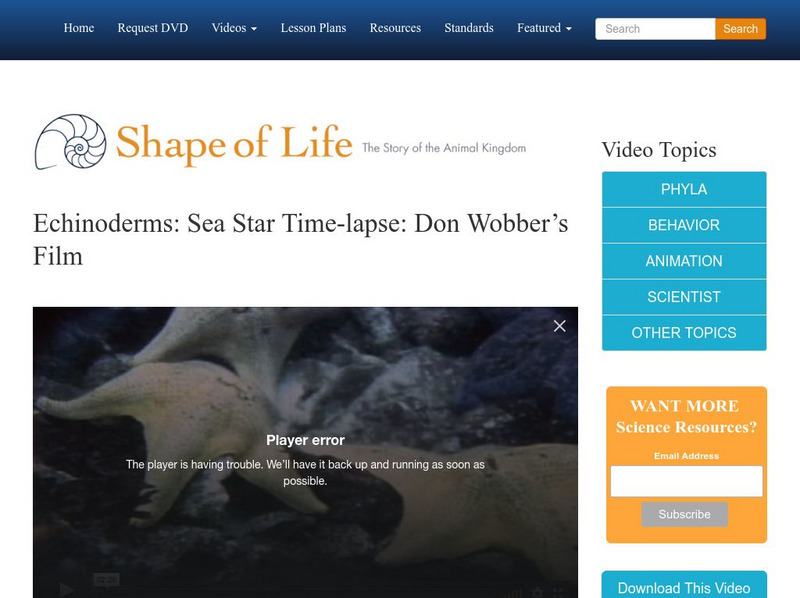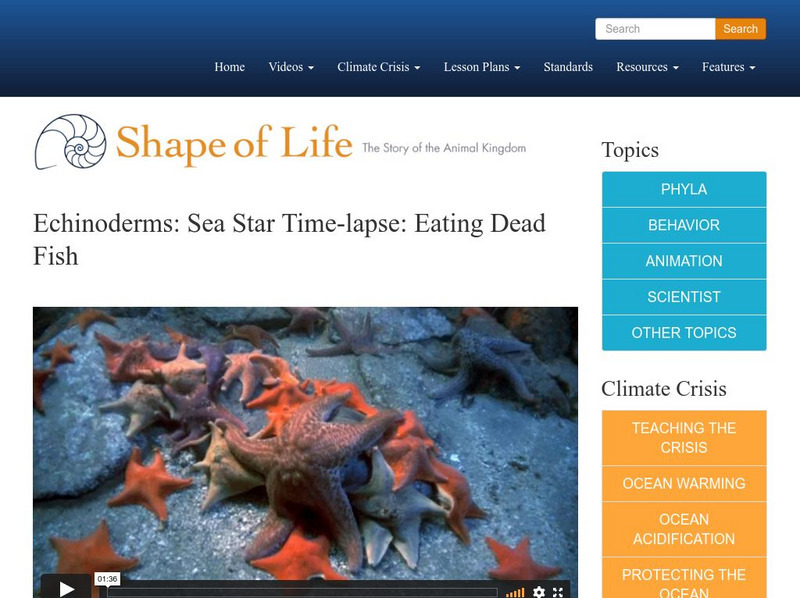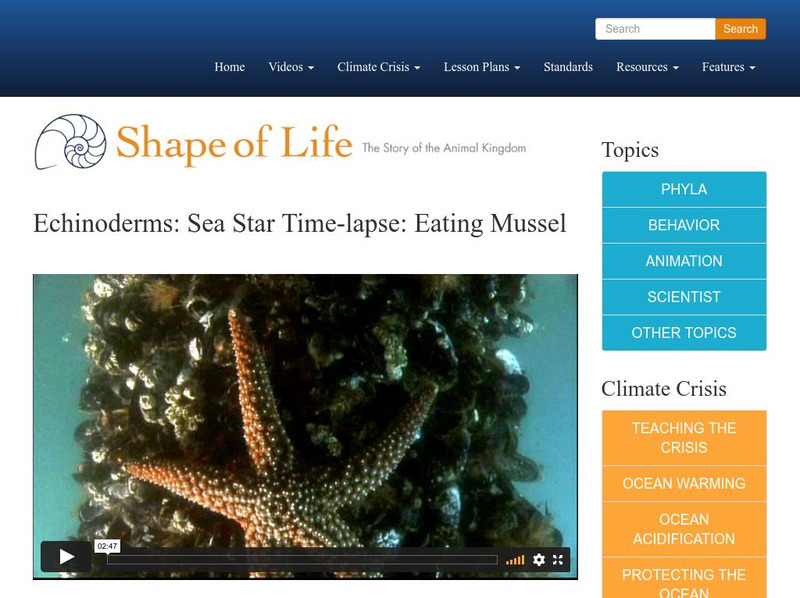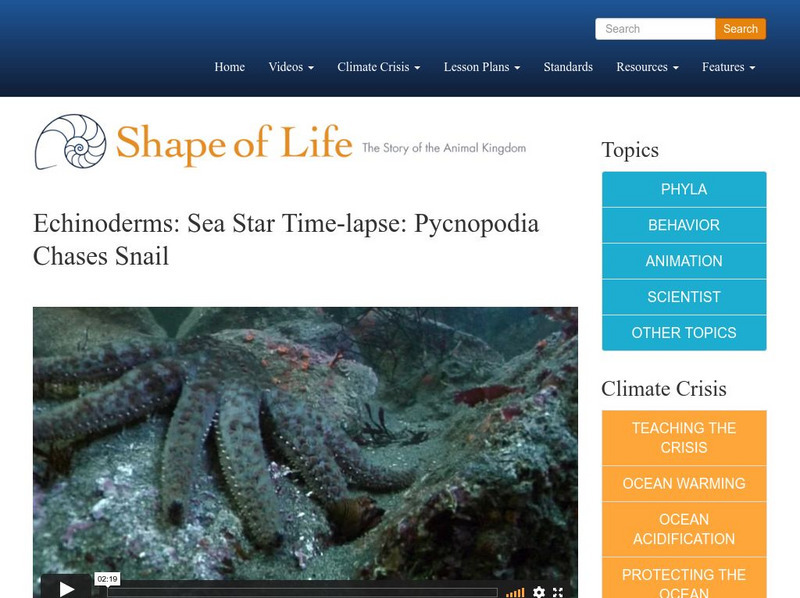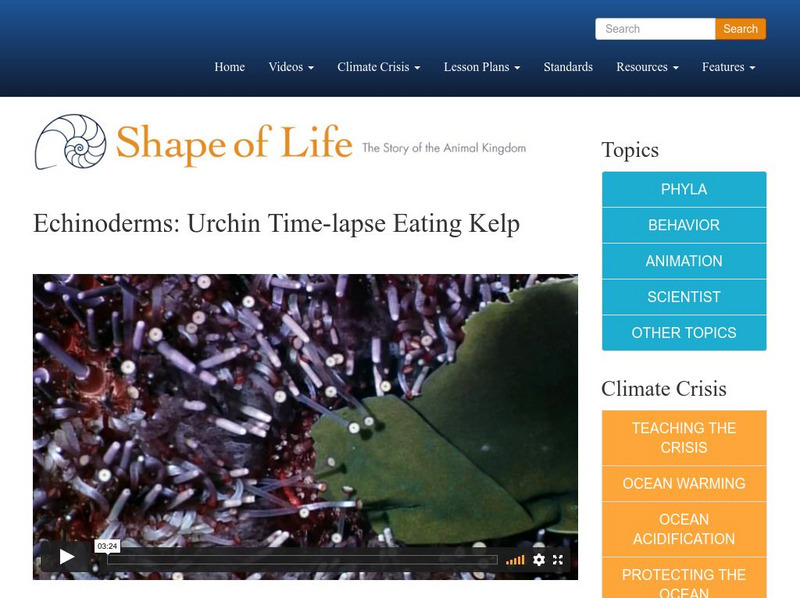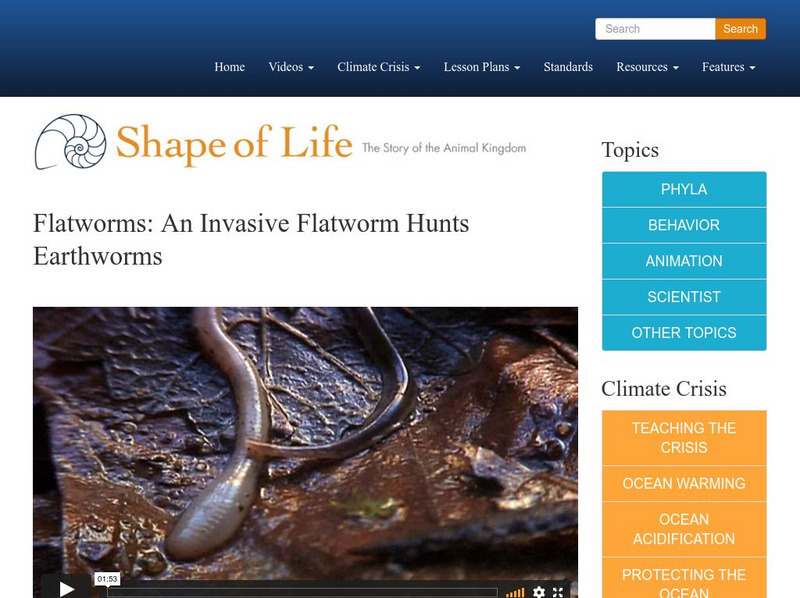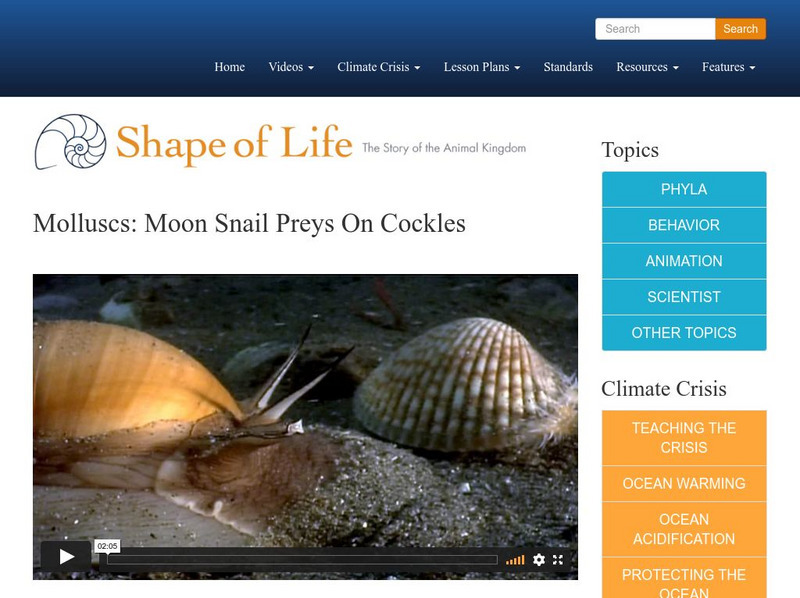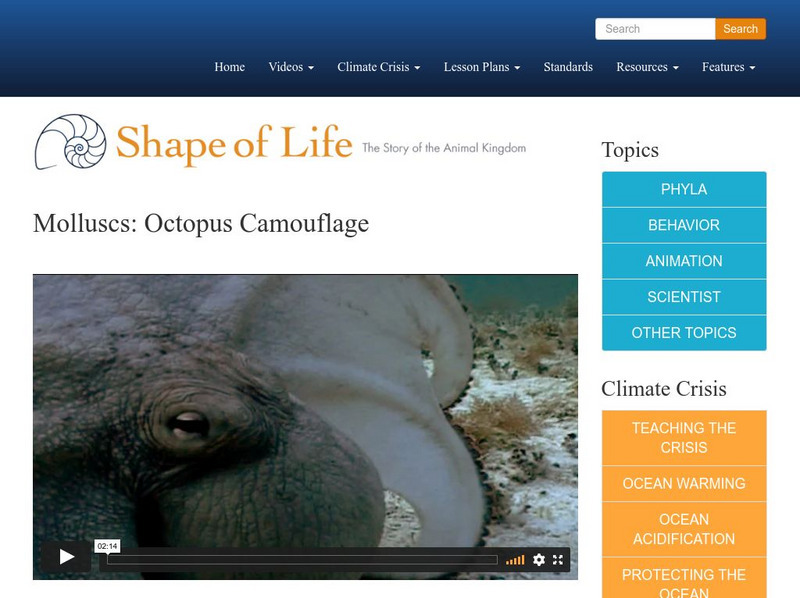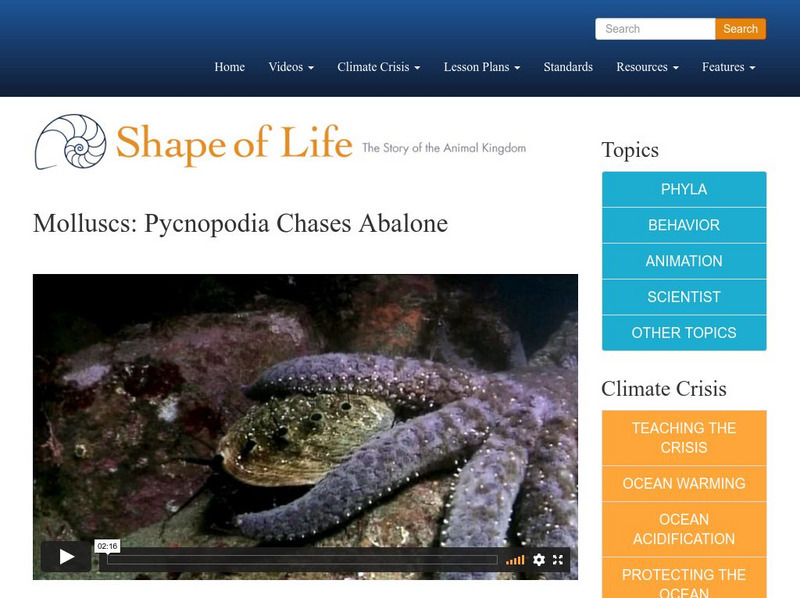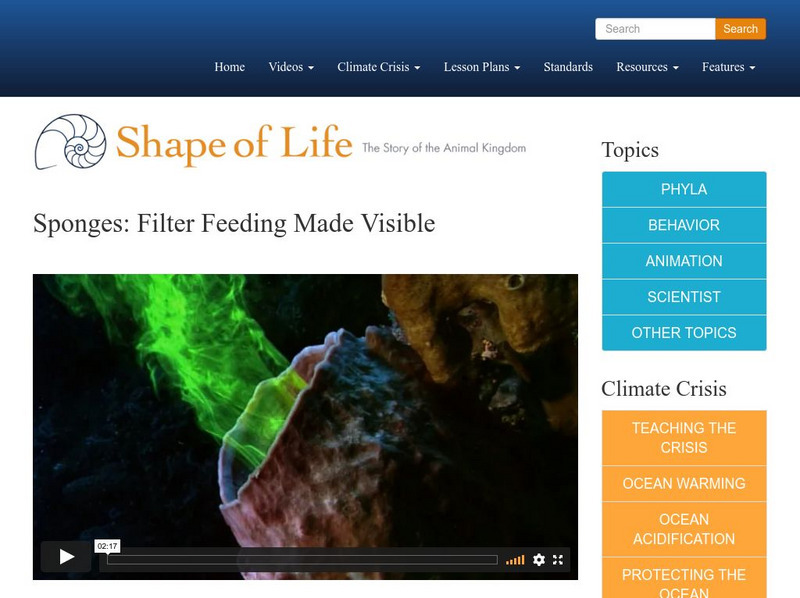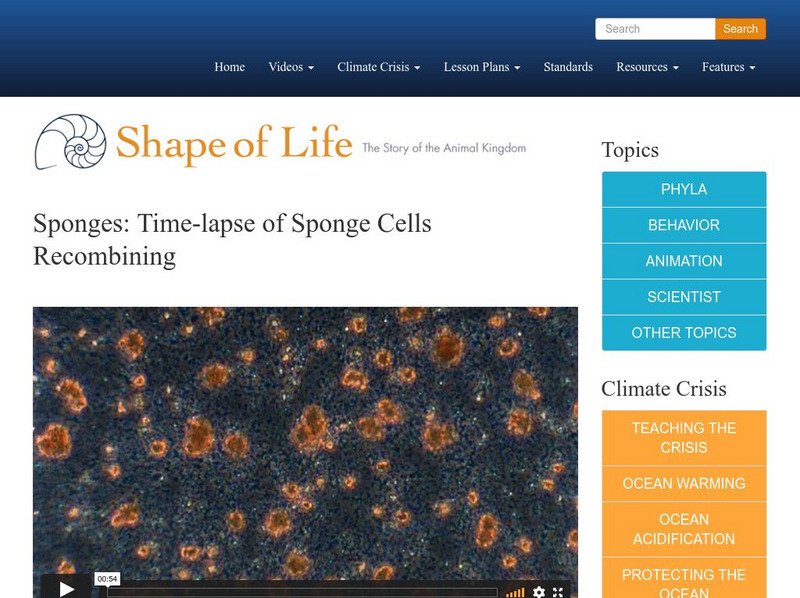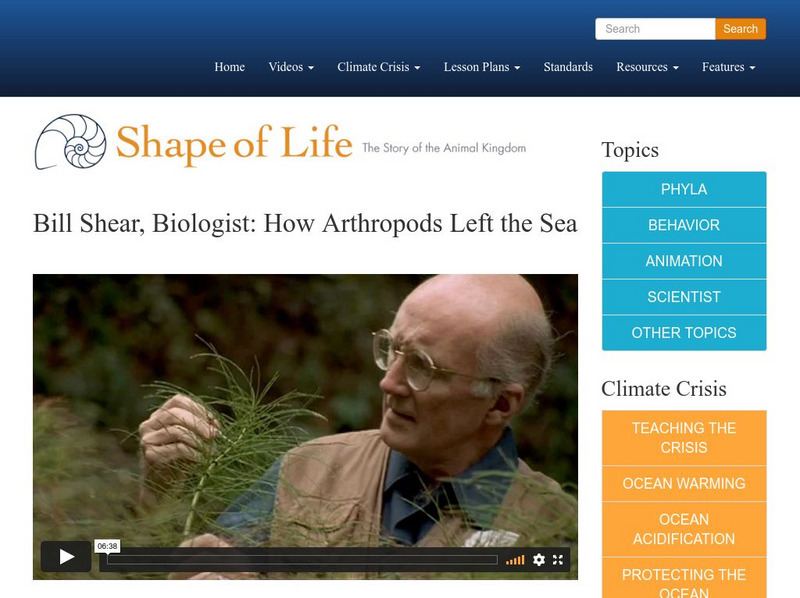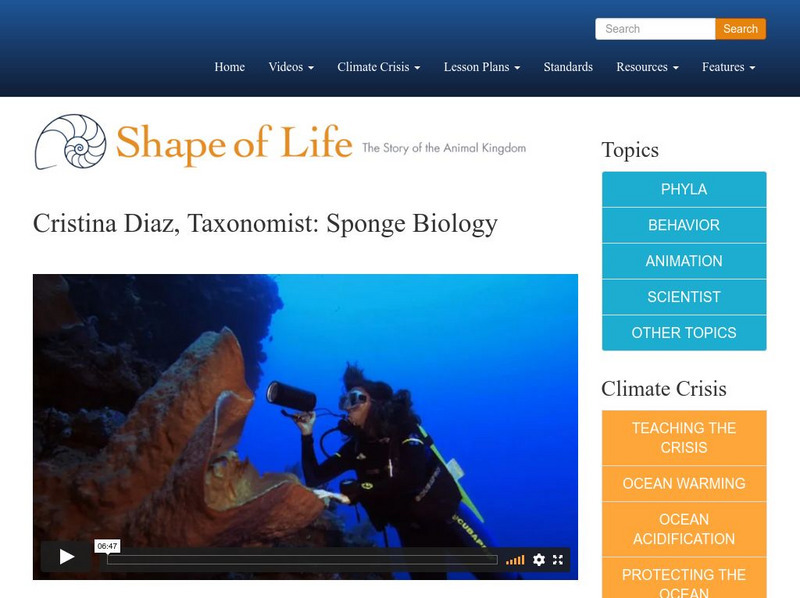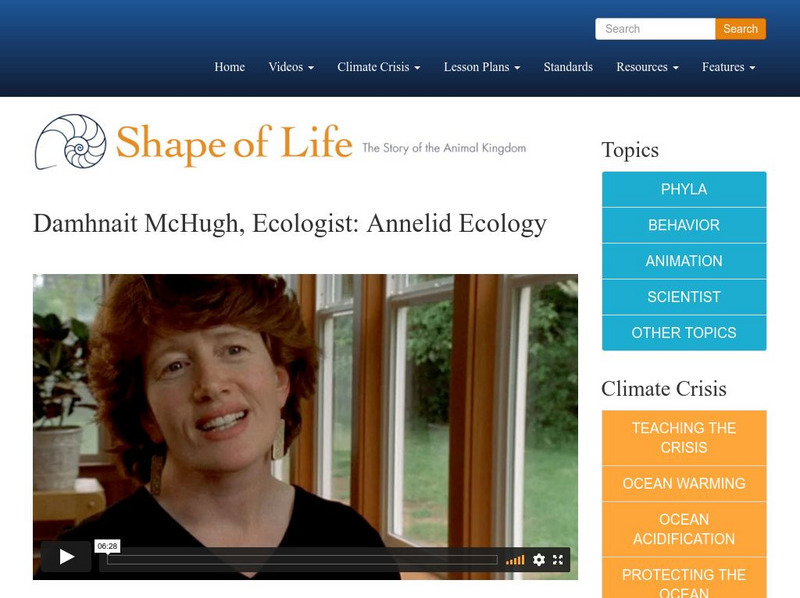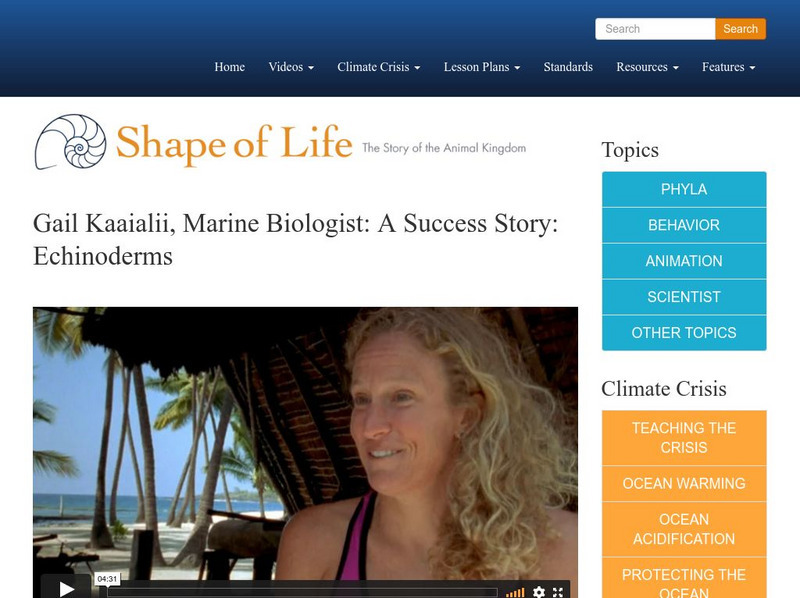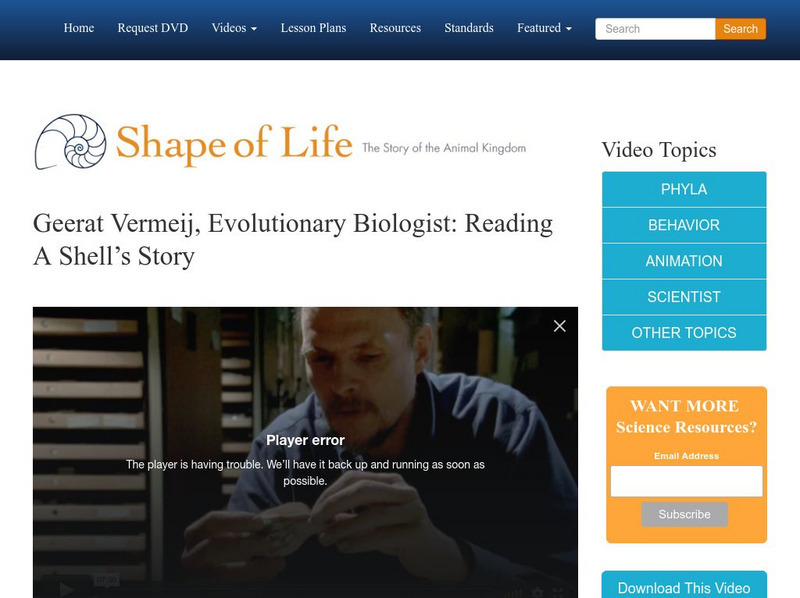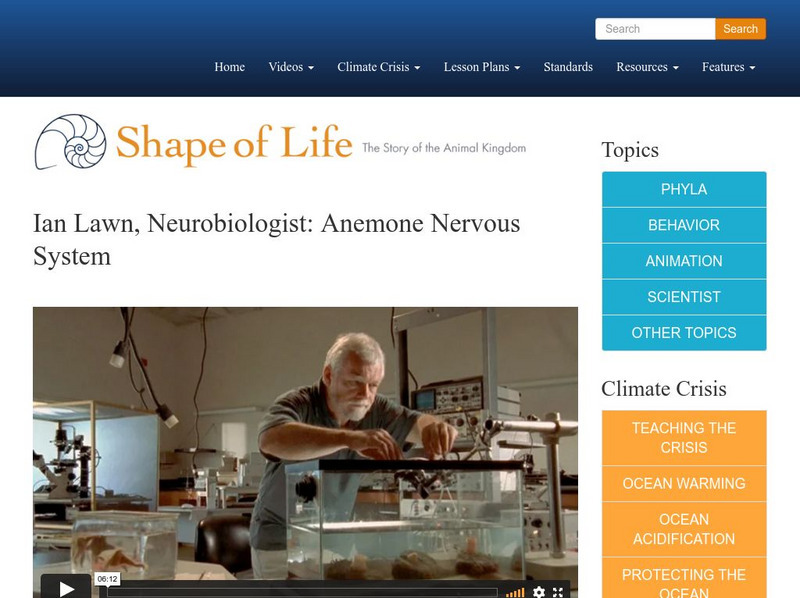Hi, what do you want to do?
Sea Studios Foundation
Shape of Life: Cnidarians: Moon Jelly Life Cycle
A video documenting the jellyfish's life cycle. Moon jelly polyps divide off tiny juvenile jellyfish called ephyra. The juveniles will grow into adults that will spawn. The offspring will settle to the bottom and grow into tiny polyps....
Sea Studios Foundation
Shape of Life: Echinoderms: Sea Star Time Lapse: Don Wobber's Film
A time-lapse movie shows that sea stars actively interact with each other. [2:26]
Sea Studios Foundation
Shape of Life: Echinoderms: Sea Star Time Lapse: Eating Dead Fish
Time-lapse footage shows how fast sea stars move onto a dead fish to eat it. [1:36]
Sea Studios Foundation
Shape of Life: Echinoderms: Sea Star Time Lapse: Eating Mussel
A tiny camera placed inside a mussel shows how a sea star slips its stomach inside the mussel to digest the mussel's flesh. [2:47]
Sea Studios Foundation
Shape of Life: Echinoderms: Sea Star Time Lapse: Pycnopodia Chases Snail
The sun star, Pcynopodia, chases and catches a snail in this video. [2:19]
Sea Studios Foundation
Shape of Life: Echinoderms: Urchin Time Lapse Eating Kelp
Want to learn more about how a sea urchin eats? Watch this video to see a sea urchins using their sensory tube feet to catch drifting kelp and carry it to its mouth on the underside. Also view how the sea urchin uses its five-part jaw to...
Sea Studios Foundation
Shape of Life: Flatworms: An Invasive Flatworm Hunts Earthworms
A predatory terrestrial flatworm catches an earthworm in this video. [1:53]
Sea Studios Foundation
Shape of Life: Flatworms: Reproduction
A video exploring the reproduction of flatworms. See how the two marine flatworms jab each other to inject sperm. The one that gets injected becomes the female and nourishes the developing fertilized eggs. [1:44]
Sea Studios Foundation
Shape of Life: Molluscs: Moon Snail Preys on Cockles
Watch as a moon snail preys on a cockle in this video. With its large foot, a moon snail manages to catch a cockle and smother it and drill a hole to feed on its flesh. The cockle tries to escape with its strong digging foot, but fails....
Sea Studios Foundation
Shape of Life: Molluscs: Nautilus Regulates Its Buoyancy
A nautilus' shell, when x-rayed, reveals the many chambers, which the nautilus uses to regulate buoyancy as it moves up and down in the ocean. Observe this process with this video! [1:54]
Sea Studios Foundation
Shape of Life: Molluscs: Octopus Camouflage
Octopuses have no shell to hide in, so camouflage is their defense. In this video you will see one rapidly changing its color and texture. [2:14]
Sea Studios Foundation
Shape of Life: Molluscs: Octopus Catching Crab
Do you know how an octopus catches its prey? Watch this video as an octopus chases and catches a crab using its eight arms to subdue its prey. [1:01]
Sea Studios Foundation
Shape of Life: Molluscs: Pycnopodia Chases Abalone
A many-armed sun star hunts an abalone. The abalone twists and turns using its foot and escapes. [2:16]
Sea Studios Foundation
Shape of Life: Sponges: Filter Feeding Made Visible
Watch as a florescent dye is injected next to a sponge and the sponge quickly pumps the dye through its body in this video. This demonstrates that sponges actively pump large quantities of water through their bodies in order to extract...
Sea Studios Foundation
Shape of Life: Sponges: Time Lapse of Sponge Cells Recombining
Did you know sponges are the only animals that if broken down to the level of their cells, can reassemble themselves? Watch this video as sponge is passed through a sieve to break apart its cells. Then watch as the cells recognize each...
Sea Studios Foundation
Shape of Life: Bill Shear, Biologist: How Arthropods Left the Sea
Follow Bill Shear as he investigates how arthropods made the transition to living on land by looking at microfossils preserved along with fossil plants. In this video watch as he extracts tiny fossils by dissolving the rock that they are...
Sea Studios Foundation
Shape of Life: Cristina Diaz: Taxonomist: Sponge Biology
Cristina Diaz describes her work as a taxonomist in this video. She dives in Indonesia to study her favorite animal, the sponge. Conducting an experiment to see how fast a sponge filters, she injects a colored dye into the water. The...
Sea Studios Foundation
Shape of Life: Damhnait Mc Hugh, Ecologist: Annelid Ecology
Damhnait McHugh wants to understand how annelids have adapted to such a wide variety of habitats in this video. She takes her students into the field, to mudflats and to gardens. McHugh explains how earthworms' digging and eating debris...
Sea Studios Foundation
Shape of Life: Des Collins, Paleontologist: The Burgess Shale
Follow Des Collins, a paleontologist, as he looks back into deep time to study the Cambrian explosion in this video. He studies fossils from the Burgess Shale in Canada. He describes the excitement and difficulty of putting together an...
Sea Studios Foundation
Shape of Life: Gail Kaaialii, Marine Biologist: A Success Story: Echinoderms
Learn about the echinoderms through Gail Kaaialii. She dives with her students in Hawaii to observe these remarkable animals. She discusses how different these animals are from humans. [4:31]
Sea Studios Foundation
Shape of Life: Geerat Vermeij, Evolutionary Biologist: Reading a Shell's Story
A video exploring the shells of a mollusc. See Geerat Vermeij observe, with his fingers, mollusc defense strategies as revealed by the design of their shells. For him, shell defense design is analogous to aircraft designed to protect...
Sea Studios Foundation
Shape of Life: Ian Lawn, Neurobiologist: Anemone Nervous System
A video to investigate the origin of behaviors through the research of Ian Lawn. He studies an anemone, Stomphia, to try to understand how an animal with a simple body plan and nervous system is capable of complex behavior. Underwater we...
Sea Studios Foundation
Shape of Life: Jack Costello, Biologist: Why Jellyfish Swim
Jack Costello studies how jellyfish move and feed. He dives to videotape moon jellies swimming and observes that they don't really move much. With this in mind, he seeks to answer the question: why do jellyfish spend their time swimming?...
Sea Studios Foundation
Shape of Life: Jenny Clack, Paleontologist: The First Vertebrate Walks on Land
Investigate with a paleontologist, Jenny Clack, who wants to find the transitional form between fish and land vertebrates or tetrapods. She spent years teasing a fossil from its rock and studying the fish-like animal that shows evolution...






